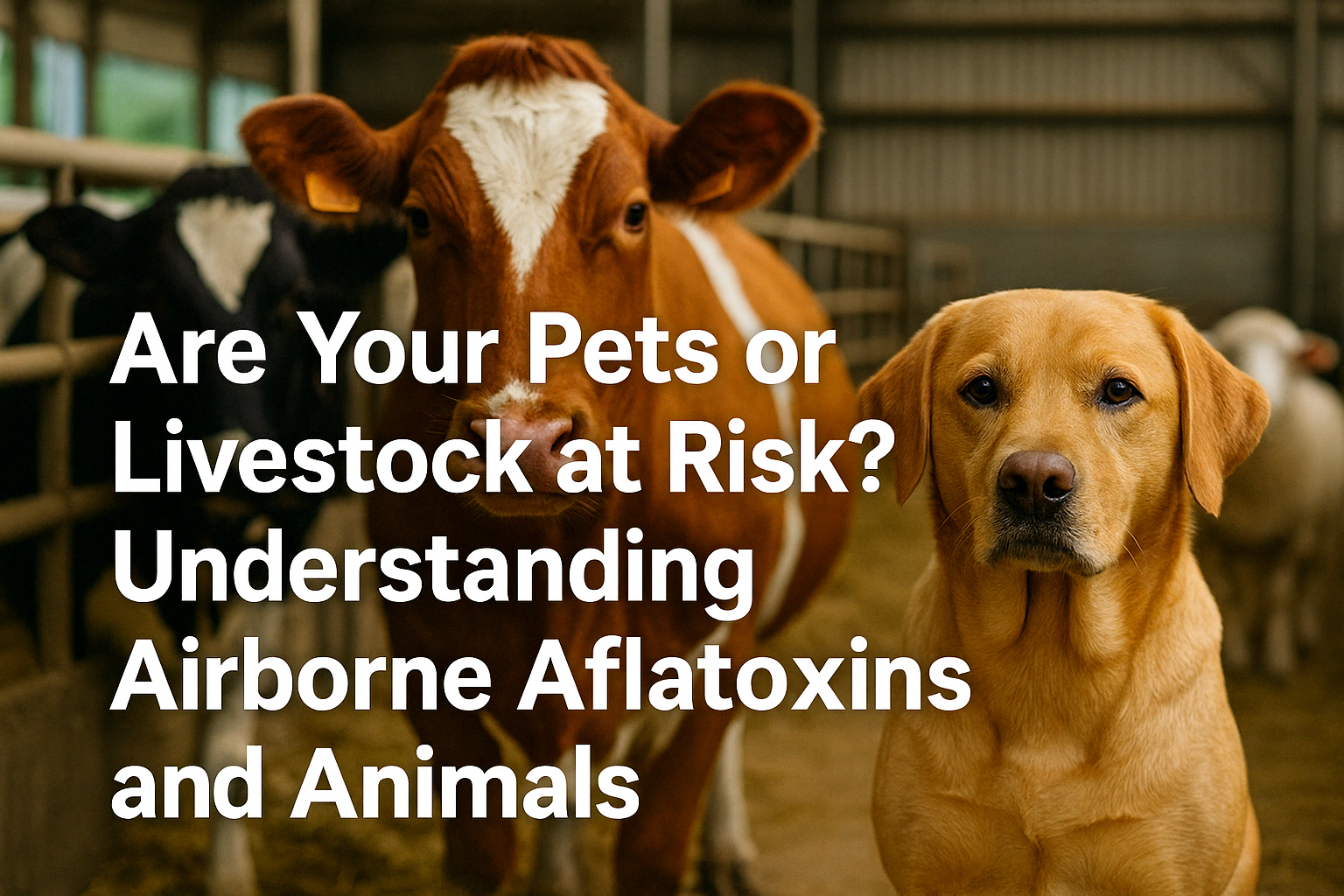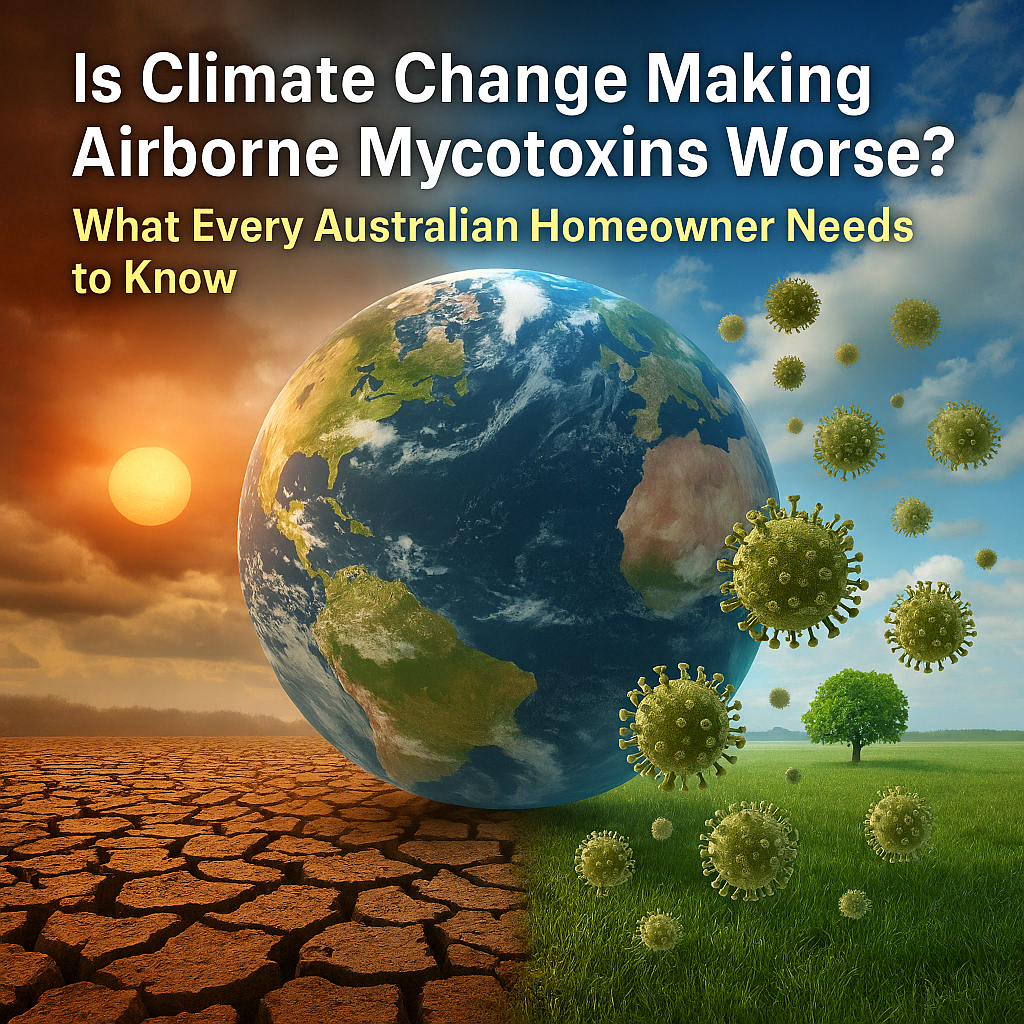
Are Your Pets or Livestock at Risk? Understanding Airborne Aflatoxins and Animals
Introduction
Mould is not just a concern for homes and people—it also poses a serious threat to animals. When mould spreads in barns, sheds, feed storage areas, or even inside homes, it can release aflatoxins—a dangerous type of airborne mycotoxin.
These toxins can affect livestock and pets through inhalation or ingestion. And because animals can’t communicate symptoms as clearly as humans, problems may go unnoticed until significant damage has occurred.
The Mould Group are specialists in identifying airborne toxins like aflatoxins and creating safer environments for both humans and animals. Their work is critical for property owners, farmers, renovators, and pet lovers who want to protect vulnerable lives.
What Are Airborne Aflatoxins and Why Are They Dangerous?
Aflatoxins are toxic compounds produced by moulds like Aspergillus flavus and Aspergillus parasiticus. These moulds thrive in warm, humid environments—often found in barns, animal shelters, and cool rooms where ventilation is poor.
When disturbed or left unchecked, these moulds release spores and aflatoxins into the air. Animals can breathe these in or consume contaminated feed, bedding, or surfaces. Unlike chemical toxins, these airborne poisons are invisible but highly potent.
How Can Airborne Aflatoxins Affect Animal Health?
Animals—both domestic and farm—can suffer serious health consequences from aflatoxin exposure. Symptoms include:
Coughing or wheezing
Decreased appetite
Weight loss
Liver damage
Fatigue or lethargy
Suppressed immunity
In poultry and cattle, aflatoxins may reduce growth rates and egg production. In pets like dogs and cats, symptoms often mimic respiratory infections or poisoning.
What Causes Mould and Aflatoxins to Form in Animal Environments?
Several environmental factors promote mould growth and aflatoxin release:
High humidity in enclosed spaces
Spoiled or damp feed and bedding
Water damage in barns or sheds
Infrequent cleaning or ventilation
Leaky cool rooms in commercial facilities
Improper feed storage on farms or in pet food containers
Animal environments that aren’t regularly monitored are especially prone to these conditions.
How Can You Test for Airborne Aflatoxins Around Animals?
Early detection is critical. The following methods are used by professionals to confirm the presence of airborne aflatoxins:
Air sampling inside barns, pet shelters, and feed storage areas
Feed testing for fungal contamination
Surface and bedding testing using spore traps and swabs
Humidity monitoring to locate mould-prone zones
Lab analysis of affected areas by The Mould Group
These tests allow homeowners and farmers to act quickly before animals are harmed.
What Are the Best Ways to Remove Airborne Aflatoxins?
If aflatoxins are detected, remediation must be thorough and safe for animals. Here are the key methods:
Dispose of contaminated feed or bedding immediately
Clean with HEPA vacuums and anti-fungal solutions
Improve airflow with exhaust fans or open-air systems
Use industrial air purifiers in enclosed areas
Apply safe disinfectants to pens, kennels, and cages
These actions reduce the chance of re-contamination and create safer living conditions.
How Can You Prevent Mycotoxin Contamination for Animals?
Prevention is always better than treatment. These simple habits make a major difference:
Store animal feed in airtight containers
Inspect feed and hay regularly for signs of spoilage
Keep barns and pet areas dry and well-ventilated
Use moisture absorbers or dehumidifiers
Clean cool rooms and animal housing areas frequently
Routine inspections after wet seasons or storms help to catch issues early—before mould becomes a threat.
Which Animals Are Most at Risk from Airborne Aflatoxins?
All animals can be affected, but some are more vulnerable:
Cattle, sheep, pigs, and poultry exposed to stale feed or hay
Dogs and cats living in damp homes or near contaminated HVAC systems
Exotic pets like birds or rabbits, especially those in closed cages
Newborn or elderly animals with weaker immune systems
Even outdoor pets can suffer if they’re kept near mouldy sheds or damp feed bins.
Why a Full Inspection Is Better Than Basic Testing
As discussed in Mould Testing vs Full Inspection: What’s the Cost Difference in Brisbane?, not all testing methods catch airborne toxins. A visual check or surface swab may miss spores in ceiling voids, ductwork, or behind walls.
A full inspection with The Mould Group offers:
Moisture mapping
Thermal imaging
Air and dust sampling
Structural reviews of barns, sheds, and cool rooms
This complete picture ensures nothing is missed—keeping pets and livestock protected.
What’s Next? Learn How Much a Mould Inspection Costs
Curious about pricing before booking a visit? We cover everything in the next article:
How Much Does a Mould Inspection Cost in Brisbane? A Complete Breakdown
This includes residential, commercial, and agricultural inspections, with transparent pricing across all services.
Don’t leave your animals exposed.
Contact The Mould Group today for comprehensive testing and professional mould remediation.
🔗 Keep up with the latest advice on mould and animal safety: Visit The Mould Group Facebook Page
📝 Next blog in this series:
Climate Change and Airborne Mycotoxins: A Growing Threat
Recent Post
Emerging Research
Are Airborne Aflatoxins More Dangerous Than We Thought? Emerging Research Reveals the Unknowns Introduction Mould is not just a cosmetic nuisance. It’s a living organism that, when left unchecked, releases toxic by-products into your environment. One of the most concerning of these by-products is aflatoxin—a dangerous type of airborne mycotoxin. While we know that ingesting […]
Climate Change and Airborne Mycotoxins
Is Climate Change Making Airborne Mycotoxins Worse? What Every Australian Homeowner Needs to Know Introduction Mould is more than just an unsightly problem—it’s a biological hazard that can compromise your health and damage your property. As it grows, it can release dangerous toxins into the air called mycotoxins. When these mycotoxins become airborne, they can […]
Airborne Aflatoxins and Animals
Are Your Pets or Livestock at Risk? Understanding Airborne Aflatoxins and Animals Introduction Mould is not just a concern for homes and people—it also poses a serious threat to animals. When mould spreads in barns, sheds, feed storage areas, or even inside homes, it can release aflatoxins—a dangerous type of airborne mycotoxin. These toxins can […]




